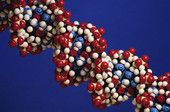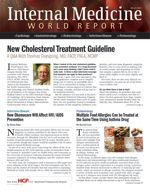Publication
Article
Internal Medicine World Report
Emerging Science on Type 2 Diabetes Provides Missing Link Between Environmental, Genetic Risk Factors
Author(s):
The missing link between environmental and genetic risk factors for type 2 diabetes suggests a new scientific approach is needed, which is where the emerging field of nutrigenetics comes into play.

Scientists believe roughly half of a patient’s type 2 diabetes mellitus (T2DM) risk is related to lifestyle and environmental exposures, while the other half stems from genetics.
Although genome-wide association studies have improved clinicians’ understanding of T2DM’s genetic basis, they have been unable to completely explain each individual’s predisposition. The missing link between environmental and genetic risk factors suggests a new scientific approach is needed, which is where the emerging field of nutrigenetics comes into play.
Nutrigenetics attempts to identify a particular patient’s genetic susceptibility to diseases, as well as the genetic variation in the effects of nutrient intake on the genome. Over the past century, dietary and physical environments — which are both modifiable contributors to diabetes — have changed extraordinarily, but humans’ genetic makeup appears to be the same.
Since the 1970s, many researchers have looked at individual macronutrients like carbohydrates and fat. But recently, the focus has shifted to foods and complete dietary patterns. In response to that shift, nutrigenetics offers the potential to improve diet-related disease prevention and therapy. However, it is also a challenging science, because diet is one of the most difficult exposures to assess in observational research, as most populations have variable food intake patterns.
A review in the February issue of Current Diabetes Reports summarizes the present state of knowledge about T2DM and key gene-nutrient interactions. The authors covered the evolution of collective understanding, from the “thrifty gene” hypothesis to genetic loci associated with T2DM. They also presented evidence linking specific loci to phenotype. Some alleles appear to lose their protective effects when exposed to high-fat diets, while other alleles appear to promote fasting insulin stability when whole grains are consumed.
In the near future, studies in the vein of nutrigenetics should include large samples sizes involving different ethnicities, a collection of extensive dietary exposure data, and validation in independent populations, which are all needed to establish evidence on the interactions among genotype, diet, and disease. The ultimate goal is personalized risk assessment and genome-customized diets.





